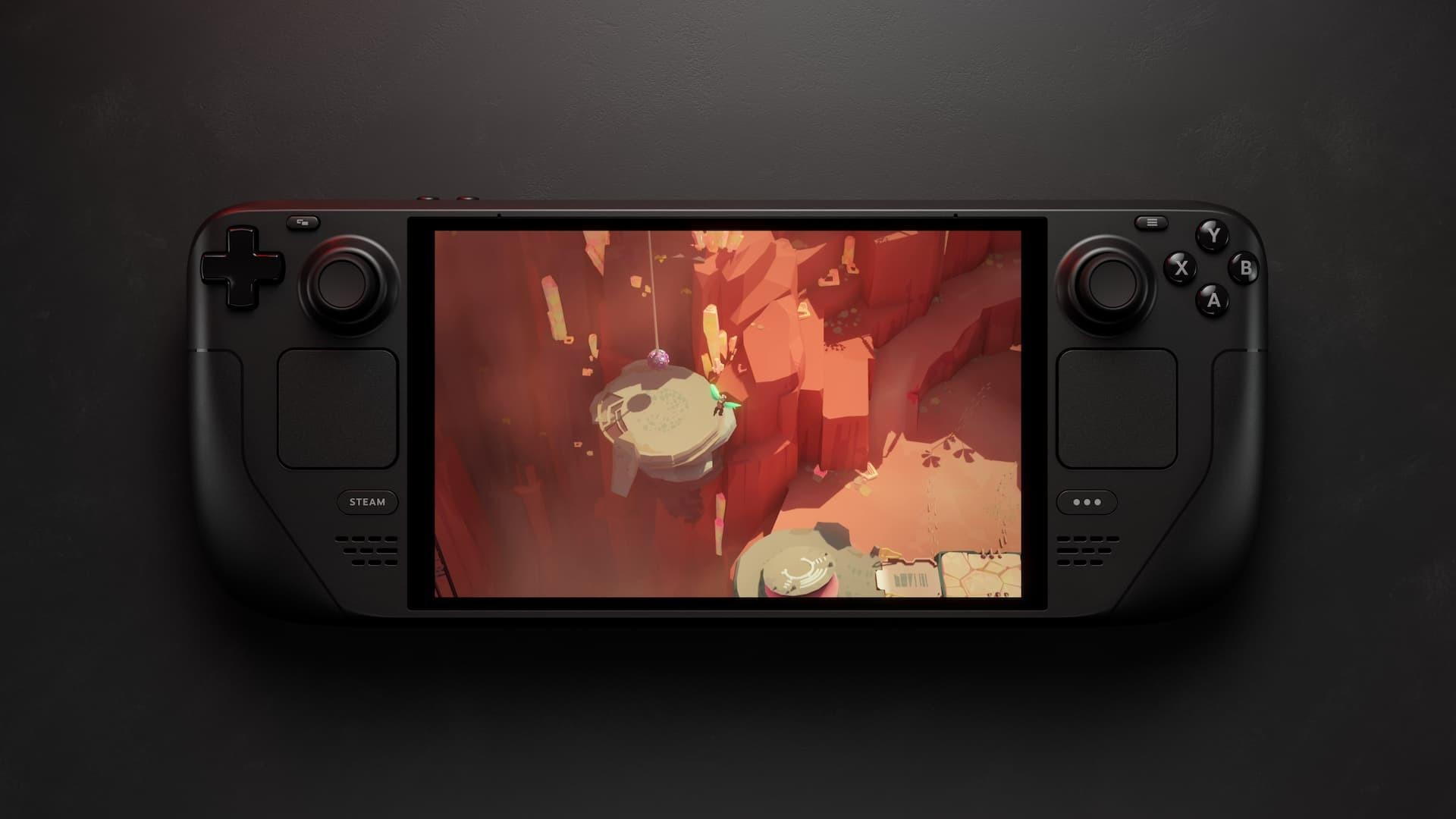
The latest Steam Deck update changes the default color rendering on the LCD model to emulate sRGB color gamut, which should enable warmer and more vibrant colors.
Most of the update's biggest changes are to the display settings. While the LCD device's default setting has been changed to the sRGB, you can change it back to the "native" display or to a setting called "boosted," which further enhances color and appearance at the risk of gradient clipping. You can now enable HDR for when the Deck is connected to a display that supports the feature. VRR is also now supported.
An image of the new Color Display settings menu.In more general updates, external storage will now auto-mount when you connect it to your Deck. You can still manage and format storage devices by clicking on "settings" and then "storage." The update repairs a problem where specific workloads would hinder CPU performance until CMT was manually turned off. Graphic drivers were also updated, enabling better performance for Starfield as well as general improvement.
The update also adds support for the new OLED models, which went on sale November 16. The previous LCD models are ceasing production and have now gotten significant price cuts. While the OLED is a significant upgrade, Valve has stated that a Steam Deck 2 is still years away.
You can read the full patch notes or on Steam.
SteamOS 3.5.5 Update Patch Notes
SteamOS 3.5.5 has been released to the Stable channel for Deck with the following changes:
Display
- The default color rendering for Steam Deck LCD has been adjusted to emulate the sRGB color gamut, resulting in a slightly warmer and more vibrant color appearance.
- Added Settings -> Adjust Display Colors, to tune the display's Color Vibrancy and Color Temperature. The settings can be tuned with a preview of a test image (above), or with your running game.
- Native: The native display color appearance (the color rendering for Steam Deck prior to this update).
- sRGB: Emulate the sRGB primaries, in a smooth manner that does not introduce gradient clipping.
- Boosted: Emulate a wider-gamut display appearance, resulting in increased apparent vibrance. May result in gradient clipping.
- HDR can now be enabled in Display Settings if supported by the external display.
- Added HDR Analysis to Advanced Display settings.
- VRR can now be enabled in Display Settings if supported by the USB-C adapter.
- Reworked Quick-Access scaling settings to separate scaling from filtering. Added Stretch and Zoom scaling as new options to handle different aspect ratios.
- Fixed a long-standing issue where the internal display backlight would always stay on.
- Fixed touchscreen orientation while external display is connected.
- Compositing is now avoided in additional scenarios, reducing latency and stutter in situation with multiple overlays on screen.
- Improved latency in certain situations where the application renders slower than the display's refresh rate.
General
- Added support for Steam Deck OLED.
- Fixed an issue where certain workloads would exhibit severe CPU performance issues unless SMT was manually disabled.
- External storage devices are now auto-mounted when connected to Steam Deck. To format or manage storage devices use the new device management interface in Settings->Storage.
- Updated graphics drivers, with many performance and functionality improvements. Improved performance for Starfield. Fixed viewmodel corruption in Amnesia: The Bunker and launch failures for Immortals of Aveum and Kaiju-A-GoGo.
- Improved Bluetooth connection stability, especially with multiple controllers
- Slightly improved sleep resume speed
- Implemented switching between controller bindings and mouse/keyboard desktop bindings by long-pressing Options in the Linux hid-steam driver, to match Steam's default Desktop configuration.
- Improved fade transitions between applications.
- The contents of the performance overlay can now be customized by creating a ~/.config/MangoHud/presets.conf configuration file.
- Fixed a bug where some games could appear stretched if their window size didn't match their swapchain size (eg. Naruto Shippuden Ultimate Ninja Storm 4)
- Fixed Disgaea PC needing to be tapped on before input works
- Fixed physical dimensions reported to games, fixing some issues with an incorrect aspect ratio sometimes being detected (eg. Returnal)
- Worked around a problem where Allow Tearing could cause heavy stuttering if the Performance Overlay or other overlays appeared on screen. Tearing is now impossible in such situations, and the Performance Overlay should be disabled for best results.
- Fixed a problem where keyboard input would not be detected in Overwatch 2
- Controller firmware: fixed an issue where some thumbstick touch sensors would lose touch periodically
Firmware 118
- Added voltage offset settings.
Steam Deck Dock Firmware 121
- Added VRR support.
- Improves reliability when changing display modes via on-screen menus
- Fixed issues with 6bpc color modes, improving high resolution/refresh mode support
- Improves detection of HDMI cable hot-plug events
Updated Arch Linux base
- This update pulls in newer performance, security and stability fixes for the underlying packages that are the foundation for SteamOS
- Most notably, this includes recent changes to KDE Plasma, Steam Deck's Desktop Mode. Full notes on these updates can be found on KDE's website here. Here are a few of the highlights:
- New window tiling system
- Updated Discover (app store / software manager) with a new homepage and improved search
- Discover can now perform system updates from the desktop
- Updated desktop widgets